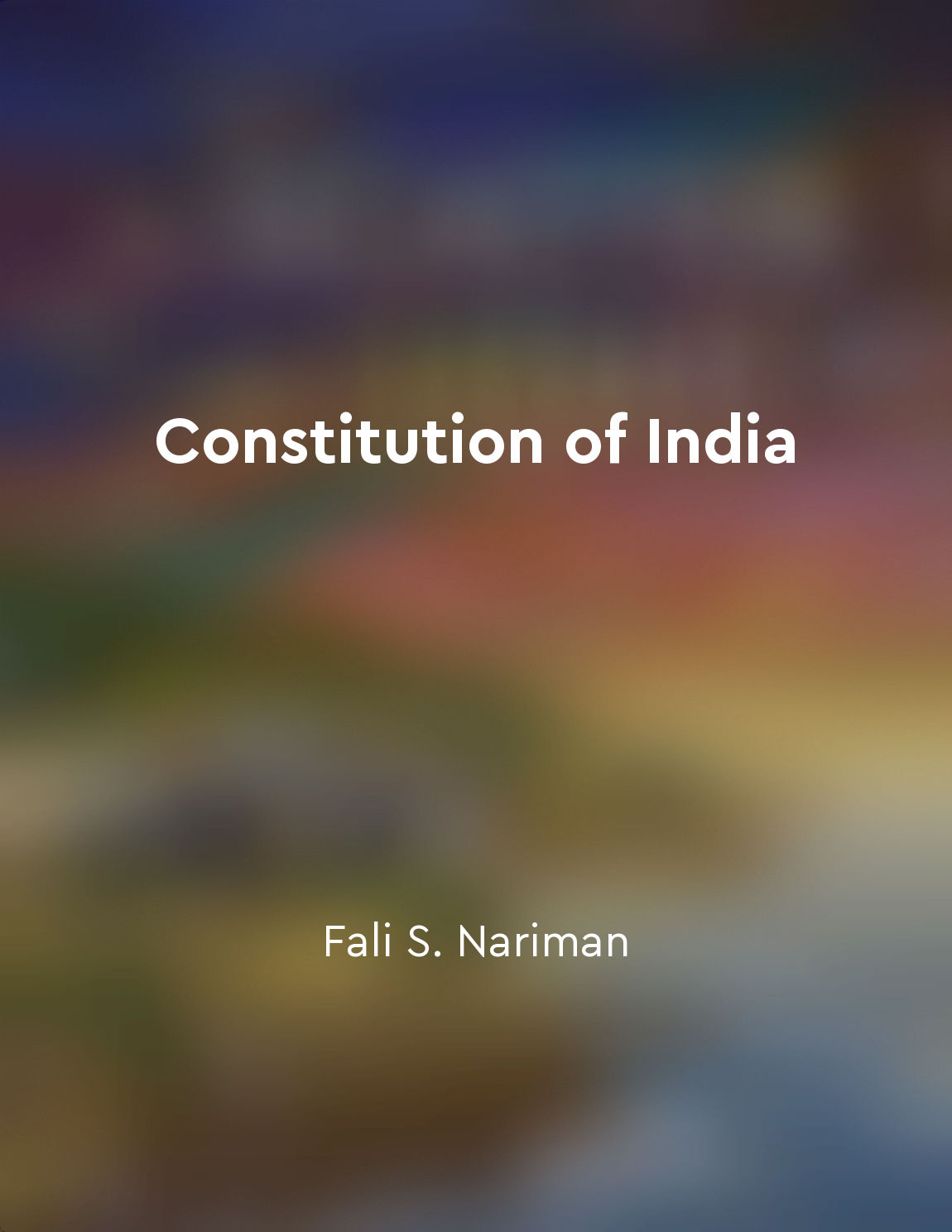Constitution of India from "summary" of Indian Polity and Constitution Book by Mocktime Publication
The Constitution of India is the supreme law of the country, which lays down the framework that defines the political principles, establishes the structure, procedures, powers, and duties of the government institutions. It also sets out the fundamental rights, directive principles, and the duties of citizens. The Constitution of India was adopted on 26th January 1950 and it is the lengthiest written constitution in the world. It consists of a preamble, 22 parts with 395 articles, 12 schedules, and 5 appendices. The Constitution has been amended several times to meet the changing needs of the society and to address the emerging challenges. The Preamble of the Constitution of India reflects the objectives and the basic structure of the Constitution. It declares India to be a sovereign, socialist, secular, and democratic republic, and it promises justice, liberty, equality, and fraternity to all its citizens. The Preamble also aims to secure for its citizens unity and integrity of the nation. The Constitution of India is federal in nature with a strong bias towards the center. It establishes a dual polity, dividing powers between the center and the states. The Constitution also provides for a parliamentary form of government at the center and in the states, with a bicameral legislature at the center and unicameral legislatures in the states. The Constitution of India guarantees fundamental rights to the citizens, which include the right to equality, right to freedom, right against exploitation, right to freedom of religion, cultural and educational rights, and the right to constitutional remedies. These rights are enforceable by the courts and are considered the cornerstone of a democratic society. The Constitution also lays down directive principles of state policy, which are guidelines for the government to promote social and economic justice, and to ensure the welfare of the people. While these principles are not enforceable by the courts, they are fundamental in the governance of the country. The Constitution of India also provides for the establishment of independent constitutional bodies like the Election Commission, the Comptroller and Auditor General, and the Union Public Service Commission to ensure the smooth functioning of the democratic system. It also defines the powers and functions of the executive, judiciary, and legislature to maintain the balance of power.- The Constitution of India is a living document that reflects the aspirations and values of the people of India. It is a dynamic and evolving document that has stood the test of time and has guided the nation through various challenges and changes.
Similar Posts
Fundamental duties
Fundamental duties are a unique feature of the Indian Constitution that were added through the 42nd Amendment Act in 1976. Thes...

Separation of powers is a key principle
The principle of separation of powers is fundamental to our constitutional scheme. It ensures that the powers of the government...
Study of socioeconomic conditions in different periods is important
Understanding the socioeconomic conditions of different periods is crucial in comprehending the historical context of a society...
The Parliament is the supreme legislative body
The Constitution of India establishes the Parliament as the highest authority in the land when it comes to making laws. This me...

